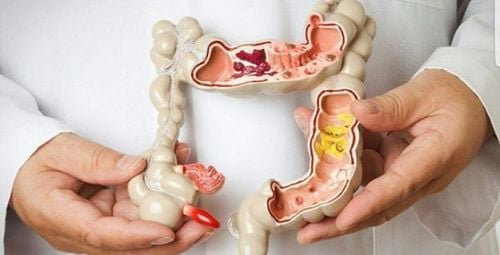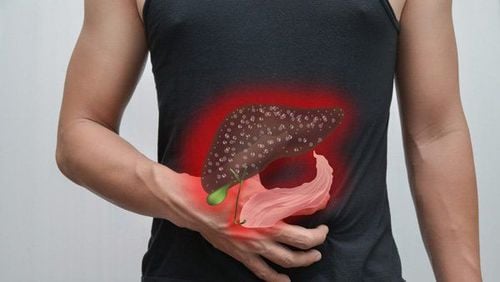Shoulder bone cancer is often difficult to detect. Therefore, recognizing the signs of shoulder bone cancer in the early stages is very important for timely detection and treatment of the disease.
1. Epidemiology of scapular bone cancer
Scapular bone cancer is a relatively rare type of bone cancer compared to bone cancer in other locations of the body. In one study, the incidence of scapular bone cancer was about 3.6% among patients with bone tumors. Previous studies have shown that tumors appearing in the shoulder blade have a higher risk of malignancy than neighboring areas such as the upper end of the humerus or clavicle, but there are few studies describing the incidence, clinical characteristics and factors that suspect malignancy of scapular bone cancer.
Scapular bone cancer patients often detect the disease late because there are many tendons and muscles surrounding the scapula. This also makes it more difficult to biopsy bone tumors for a definitive diagnosis, as well as difficult to distinguish from secondary bone cancers (caused by cancer from other organs metastasizing to the bone).
Nowadays, the development of imaging has greatly assisted in the diagnosis of shoulder bone cancer as well as other abnormalities in this area, which is also important in re-evaluating the incidence pattern and detecting new lesions suspected of malignancy.
Many studies have shown that primary tumors of the shoulder blade tend to be more malignant than benign. The most common types of shoulder bone cancer are: chondrosarcoma, osteosarcoma, and Ewing's sarcoma. If chondrosarcoma is the most common malignant tumor of the shoulder, osteochondroma is the most common benign tumor of the shoulder.
2. Signs of shoulder bone cancer
2.1. Feeling a mass in the shoulder area
Symptoms of shoulder bone cancer often cause patients to go to the doctor and discover the disease by feeling a hard mass in the shoulder area. This mass appears without trauma, often grows in size over time and may or may not cause pain to the patient.
For tumors appearing in the shoulder joint or surrounding areas, it can cause the shoulder joint to swell, ache, and limit the range of motion of the joint.
Patients with a tumor in the shoulder area need to see a doctor immediately for accurate diagnosis and timely treatment.
2.2. Shoulder pain
Pain is one of the common symptoms of shoulder cancer. At first, patients often feel a dull, intermittent pain, which gradually becomes persistent and increases with movement, affecting work and daily activities.
However, shoulder pain is not specific to bone cancer, but can also occur in many other diseases such as arthritis, osteoarthritis, osteoporosis, etc. It is important that patients be examined to find the cause of shoulder pain, especially in the following cases:
Shoulder pain recurs many times.
Shoulder pain increases at night.
Does not respond / poorly respond to pain relievers.
Other cases of pain have unknown causes.
2.3. Pathological fracture
Shoulder cancer can be discovered incidentally after a minor injury to the shoulder area causes a fracture, which is called a pathological fracture. Shoulder cancer makes the bone fragile, and even a slight impact can cause damage to the bone.
2.4. Fatigue
Fatigue is a common symptom in patients with shoulder bone cancer. Patients often feel tired, weak, and lose energy without a clear cause. This condition often increases gradually if not detected and treated early.
2.5. Weight loss
Unintentional weight loss is one of the symptoms of scapular cancer that should not be ignored. If the patient does not follow a diet or exercise to lose weight but suddenly loses weight in a short period of time, they should go to the clinic or hospital to check for abnormalities.
2.6. Fever, night sweats
Fever is a rare symptom of scapular cancer. In addition, patients may often sweat at night, causing poor sleep and poor health.
3. Paraclinical, diagnostic tests for shoulder bone cancer
3.1. Straight and oblique shoulder blade X-ray
X-ray is the first test to diagnose bone abnormalities (if the patient is not contraindicated for X-rays). On X-ray, shoulder bone cancer often shows thin, weak, jagged tumor edges, may not have visible tumor edges or have signs of bone destruction, bone resorption. Images of bone resorption on X-ray can be: bone cysts, gnawing, even complete loss of bone calcium, leading to pathological fractures in clinical practice.
3.2. Shoulder and whole body computed tomography (CT Scan)
Shoulder computed tomography also uses X-rays, but this technique allows for more clear and accurate detection of bone lesions, helping to determine the location, shape, and size of shoulder tumors.
Whole-body CT scan also helps detect the location of primary cancer metastasis to the bone or secondary lesions due to primary bone cancer metastasis.
3.3. Magnetic resonance imaging (MRI)
In addition to CT scan, MRI is also a useful test to evaluate shoulder tumors as well as neighboring soft tissues.
3.4. PET/CT scan
With the development of modern medicine, PET/CT is an advanced imaging technique that allows examination of suspected malignant lesions
3.5. Bone scan
Bone scan allows the detection of malignant bone lesions, including primary bone cancer or bone metastases from other primary cancers.
3.6. Pathology
Patients who detect bone tumors need to have a biopsy of the suspected lesion for histopathology to confirm the diagnosis. Shoulder bone cancer can only be confirmed when there are histopathological results.
4. Treatment of shoulder bone cancer
4.1. Surgery
Surgery is a radical treatment for shoulder bone cancer. However, depending on the stage of the disease, pathological characteristics, patient's condition, etc., the doctor will decide on a specific method such as: extensive surgery to remove bone lesions or amputation.
4.2. Systemic treatment
Chemotherapy: is a method of using chemicals to destroy cancer cells, inhibiting the division and development of cancer cells.
Targeted therapy: prevents the growth and multiplication of cancer cells, but limits the effect on normal cells.
Immunotherapy: increases the body's immune system to fight cancer.
4.3. Radiation therapy
Radiotherapy is indicated to relieve pain and prevent bone fractures in shoulder bone cancer.
To arrange an appointment, please call HOTLINE or make your reservation directly HERE. You may also download the MyVinmec app to schedule appointments faster and manage your reservations more conveniently.













